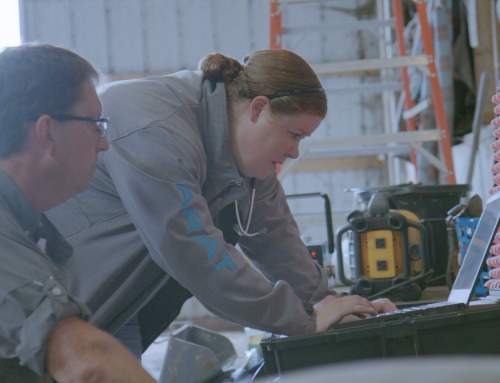by Stith Keiser | Blue Heron Consulting

This article was written for and featured in Animal Health News & Views.
I get to wear two hats as a professional – a consultant through Blue Heron Consulting, and that of a private practice owner in my personal hospitals. As a consultant, I never thought I’d write today’s blog post – begging the question of whether hospital owners should consider actually LOWERING their prices. What’s leading me to ask this question?
Let’s start with what most of us already know – The Economic Landscape:
The global economic situation in recent years has seen significant upheaval. Inflation rates have surged, affecting not just the cost of groceries and utilities but also veterinary services. According to a recent article, How to Discuss the Cost of Care, in the October/November 2024 edition of Today’s Veterinary Business, the cost of US Veterinary Services jumped by 10.3% from February 2022 to February 2023, and 7.6% from May 2023 to May 2024. The rising cost of living is pushing pet owners to reassess their spending habits, and veterinary hospitals are feeling the impact as well.
Economic studies reveal that pet ownership trends are shifting. A recent survey showed that more than 50% of pet owners are concerned about affording veterinary care. As a result, some pet owners are delaying or foregoing necessary treatments, which has a direct effect on pet health outcomes and a potential long-term impact on veterinary hospitals’ revenues.
Before I offer my own two cents, which is probably what it’s worth, let’s visit arguments for raising prices, arguments against, and other potential solutions:
Arguments for Reducing Prices
1. Accessibility for Pet Owners
One of the most compelling arguments for lowering prices is to maintain accessibility for pet owners. If veterinary costs become too prohibitive, many owners may resort to self-diagnosis, over-the-counter treatments, or even abandoning medical care altogether. Reducing prices for essential services, such as vaccinations and diagnostics, can help ensure that pets receive the preventive care they need.
2. Increased Client Retention and Loyalty
In times of economic distress, businesses that show compassion and flexibility often benefit from increased loyalty and word-of-mouth referrals. By offering more affordable prices, veterinary hospitals can position themselves as empathetic partners in pet care, encouraging long-term client relationships that may pay off in the future when the economy stabilizes.
3. Competing with Low-Cost Providers
The rise of low-cost and online veterinary service providers has added a new layer of competition. If a full-service hospital wants to compete, particularly for routine and preventive care, offering competitive pricing or discount packages might be a strategic necessity.
4. Expanding the Client Base
By reducing prices or introducing budget-friendly options, hospitals can attract a broader clientele, including those who have previously avoided veterinary services due to financial constraints. An increase in client volume, even if the profit margins are smaller per visit, could offset potential revenue losses.
Arguments Against Reducing Prices
1. Impact on Quality of Care
Maintaining a high standard of care requires investments in advanced equipment, well-trained staff, and quality medications. Cutting prices may force hospitals to make compromises that could jeopardize care quality. For instance, there might be a temptation to use cheaper materials or reduce staffing levels, which can negatively impact patient outcomes and staff morale.
2. Financial Sustainability
Veterinary hospitals face their own rising costs, from utilities to medical supplies to staff wages. With inflation affecting operational expenses, reducing prices could put significant strain on a hospital’s finances. This is especially concerning for practices already operating on thin margins, as cash flow and profitability are essential for the long-term viability of the business.
3. Perceived Value and Quality
There is a psychological aspect to pricing: Lower prices may create a perception of lower quality. For pet owners who see their animals as family members, the perceived value of services can be a critical decision factor. A significant price drop might unintentionally make clients question the hospital’s competency or commitment to excellence.
4. Potential Erosion of Staff Salaries and Benefits
The veterinary industry is already facing a staffing crisis, with burnout and turnover at all-time highs. Reducing service prices may necessitate cuts in staff salaries or benefits, further exacerbating the workforce shortage. Without adequate pay, hospitals could struggle to attract and retain skilled veterinarians and support staff, ultimately affecting patient care.
Alternative Solutions to Price Reductions
While reducing prices may seem like an obvious solution to address affordability concerns, there are alternative strategies that veterinary hospitals can consider:
1. Flexible Payment Options
Introducing payment plans, wellness plans, or partnerships with third-party financing companies can help pet owners manage costs without sacrificing quality. By spreading out payments, clients may feel more comfortable pursuing necessary care.
2. Tiered Pricing Models
Implementing a tiered pricing model allows hospitals to cater to a range of budgets. For example, offering basic, mid-level, and premium options for services can help meet diverse financial needs while still generating adequate revenue (think “spectrum of care”).
3. Client Education and Preventive Care
Focusing on education and preventive care can reduce the long-term financial burden on pet owners. By emphasizing the cost-effectiveness of early intervention and preventive measures, hospitals can help clients see the value of investing in their pets’ health before problems escalate.
4. Community Outreach and Partnerships
Collaborating with local animal shelters, nonprofits, and community organizations to offer free or low-cost clinics for vaccinations and spay/neuter services can boost a hospital’s reputation while addressing a critical need. This community involvement can also lead to referrals for more complex and profitable services.
5. Discount Programs for Low-Income Pet Owners
Instead of a blanket reduction in prices, consider targeted discount programs for those who truly need financial assistance. Proof-of-need discounts or charity funds for urgent cases can make a meaningful difference without impacting overall revenue as significantly.
Finding the Balance
There is no one-size-fits-all answer to the question of whether veterinary hospitals should reduce prices. Each practice must carefully evaluate its unique circumstances, including financial health, community demographics, and competitive landscape. Striking the right balance between affordability and quality is crucial.
In the case of one of my hospitals (and I see this with other hospitals that have taken the approach I’m about to describe), we’ve been proactive about making regular price increases for years, both to reflect rising costs, as well as to allow us to achieve hospital goals around doctor and staff compensation & benefits, equipment and facility upgrades, etc. I’ve been a vocal proponent of doing this and it’s not until we did some local pricing shopping that I realized that while we’ve been doing this, many of the other hospitals in the area hadn’t. As a result, our gradual price increases over time landed us in a spot where some of our services were markedly higher than anyone close to us. We’ve also been on the bandwagon of conveying the value for what pet-parents receive, but when we looked at the aggregate increase in our prices, compared to the area, we realized that some services were so high that even a pet-parent that understood the difference, and valued what we offered, had a hard time paying double, or more, compared to other hospitals.
In this particular hospital, we made the decision to actually reduce the cost of a few very specific services, developed messaging for our team and clients (to get ahead of any misperception that we’d just been price gouging and now were randomly dropping our prices) and rolled out the changes just last week. It’s still early to say for sure what the impact will be, but we evaluated our strategy as a hospital, our brand, and our financial health, we decided it was worth a try.
Regardless of the path you pursue, and many of us are probably pulling from multiple paths, I still believe that transparent communication with clients, thoughtful financial planning, and a commitment to value-driven care can help veterinary hospitals navigate these challenging economic times without compromising their mission or financial stability.






